We are involved in a kitchen remodel. The kitchen is about 12 ft x 17ft. 3/4 of the floor is within 1/4 being level. The other 1/4 slopes down as much as 1 1/4 in one part for about a 4 x 4 ft area. Fortunately the area where the cabinets are going is pretty level.
The way we usually level floors is shimming with layers of 30# felt. We use a step gage and draw a topography map on the floor of how many layers how far – and it works good up to about 3/16.
In this case we need a new method. I’m thinking about scribing 2 bys on edge and laying them tight to each other. Another idea is using 1/2 plywood and feathering the edge with the planer then going to thinner plywood.
I don’t trust vinyl floor leveler under there.
We are going to go over this with thinset and cement board – then thinset and ceramic tile. The tile they have picked out look like hardwood floor planks. I think they’re about 20 inches long, so there’s even more reason to get this thing level.
Any suggestions?
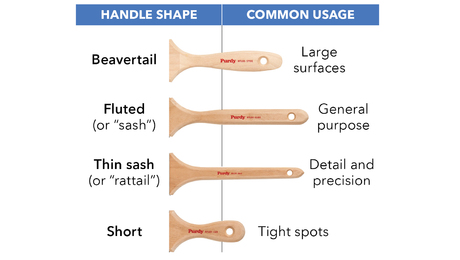
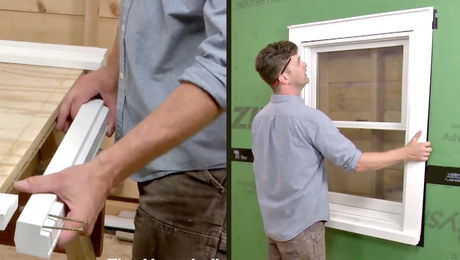
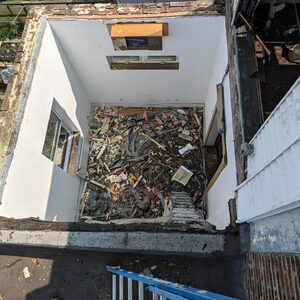
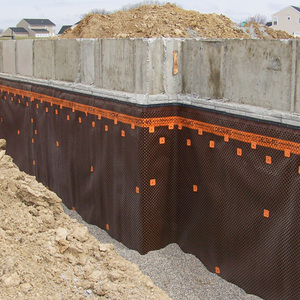
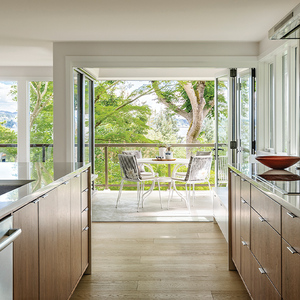
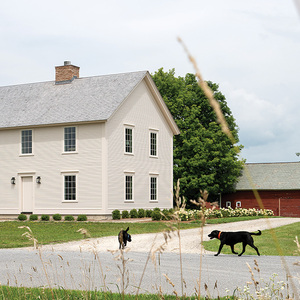













Replies
First I'd look at why it's that low. Likely the foundation is failing in that area. It might be best to correct the problem rather than paint over it.
Leaving aside why the floor does this I would draw a conture line around the low area, mix up a bucket of self leveling concrete and pour it to within an inch or so of the conture line. When it dried I'd finish to the line with floor leveler to get a feather edge. The whole job would take an hour or so and cost less than $50.00.
SELF LEVELING CONCRETE QUESTIONS
As far as fastening down the cement board over this just drill through the concrete fill with a small carbide bit and run screws into the wood beneath?
Does that stuff set up quick, would it shrink back over time, and can you go 1 1/4 inch thick with it? I've never used it. Please tell me anything else you've experienced with it.
As far as what caused the settling (DanH) thanks and I agree that would usually be ideal - I'll check on that again but we didn't think it is practical in this 100 year old 2 story plastered house with finished basement.
fonz
Your original idea would be fine if you were going over it with real wood flooring-get it close and let the flooring fly over just a bit of air. But with ceramic going down over it-you'll need a solid base-one that all that shimming might not firmly hold.
However, you could build up in areas with solidly fastened (glued and screwed) bulk-layer or two of ply joined together, then skim from zero to "it" with leveling compound. On top of this-thinset and cement board fastened through to solid underlay. You'll want no flex whatsoever that might disturb the leveling compound-cracks and breakup.
Personally, I'd for sure find out if this low-ness is done or could possibly continuing. And def. start out with screwing all the existing subfloor down good to the frame.
Yes, I'd level the floor first then screw the concrete board down. The self leveling stuff will be fine at that thickness, won't shrink and holds up well. I did an entire small bathroom with it 15 years ago and layed one inch tile over it. I was in the house several months ago and the floor looks fine, no cracks visible. You can get it at HD or Lowes usually back where the tile or carpet materials are stocked. Your application is exactly what it's made for and will work well.
A little different but we've been working on a 1930's bech house for the past several months. The floors are dead level and tiled, very odd stuff for a place this old. We had to drill a hole through the floor for an electrical conduit which is when I discovered self leveling cement 2 1/2 inches deep over the old floors. They poured right over the base shoe but the floors are flat, level and doing just fine. This would have been done by a sub with a pump truck and lots of help but it's basically the same product. Google "gyp crete."
WHAT CONSISTENCY
What consistency do you mix this self-leveling concrete to - like paint or a little thicker? How hard does it get and can you shape it any the next day if necessary with a sander or would you need diamond cup grinder? How much time do you have to place it?
This is sounding real interesting. It'll always be remote I know until we use it, but based on you guy's recomendation I'm starting to plan on it. I'm also planning on screwing down the existing floor for sure - the T & G 1 x 4s are in great shape.
SLC (Self Leveling Concrete) requires some attention to detail, but it's not that hard to work with. I used it to cover my heating mat in a 1/4" thick layer. I used the Laticrete branded stuff.
You mix it in 5 gallon bucket batches, and start a pour from one side. It self levels to a certain point, but you have to help it a little to get flat first. It sets in 5 minutes. No really... 5 minutes. When you start on one side, by the time you get to the other the first part you poured is hard. No breaks with this stuff, once water hits the mix, you are committed.
It is initially very soft though, almost like Green lid drywall compound. It achieves full strength over time, but initially you will have no problem digging into it with a fingernail.
THIS WILL BE NEW FOR US
I googled Gyp Crete 2000 - it appears to be proprietary as in only bought/applied by certified installers. I visited Mapei web site and plan to call their tech guy tomorrow (800 992 6273) and try to find out what primer and compound to order. There are several videos on youtube - MAPEI has one using Novaplan 5.
Thanks guys - I think our business has been in the dark ages on this. Maybe I can post some pictures later on how this turns out.
I had a similar problem with a floor. In my case, the entire floor sloped from one side of the room to the other, but really dropped off about 3 feet from the wall. I started with a 12 inch wide strip of 1/4" plywood and then used the long cedar shims on the edge of it for leveling. I then came back with a 24 inch wide strip and did the same thing, using liquid nails on both the shims and plywood. I was putting a wood floor down on top, but I suspect it would work just as well if you used the backerboard then tiled it. 10 years later and there is not so much as a creak when walking on the floors.
Your situation might be a little trickier if the current floor is wavy and not evenly sloped from one side to the other.
Fine Homebuilding?
Folks this is supposed to be "Fine Homebuilding", and a discussion on how to do things right. Not on how to do it like my druggoid little brother and his buds.
The first order of business is to figure out why there is this much of a drop in a realtively short distance, and then make sure the floor is stable before you do anything else. You can get it perfectly level with self leveling mud, and then install your new backer and tile over it. But, what if the increased weight you just put there causes the rate of sag to increase and six-months later your new install starts popping loose.
Investigate the sag, figure out why it sagged, and if it is stable. Then, if possible, as part of any repairs get the subfloor closer to level. Once any structural issues are resolved then worry about what kind of floor leveler to use to get things level enough to instal the new flooring.
I absolutely hate having to come in behind other people who do these half thought out "solutions" to problems. It just makes everything miserable.
Actually the first order of business is to read the thread before you comment. If you had you would have read this by the OP.
"As far as what caused the settling (DanH) thanks and I agree that would usually be ideal - I'll check on that again but we didn't think it is practical in this 100 year old 2 story plastered house with finished basement."
LEVELING FLOOR WITH MAPEI NOVAPLAN EASY
View Image
View Image
View Image
This was our first experience with self leveling concrete. The Mapei tech support didn't sign off on what we did here, but we had a sound structure that wasn't practical to change what has developed over almost 100 years (along with finished basement to attic. Walls have been added in the basement to stabilize what "is". The tech guy said this stuff is not made for use over "plank boards" - but I don't think he understood it has no place to go with the concrete board and thinset over.
If we had it to do over I think I would have coated over the Novaplan with the primer (since we had it on hand - it couldn't hurt).
We used 3/4 and 1/2 inch plywood as fillers to save the "Novaplan Easy" then added tapered "forms" to help us break it up into sections and also know if we were on grade. After the original T&G floor and plywood "fillers" were screwed down we coated with the MAPEI PRIMER (which was 125$/2 gallon which will cover 400 sq ft). Next, for "insurance" we put down self - stick fiber mesh.
Then we used 4 - 50 pound bags of Novaplan easy (each bag will cover 12 sq ft 1/2 inch thick. (40 $ each). We ran just a little short (the white areas) just on one edge so we used thinset to taper from about 1/8 out about 16 inches. Next we cut all the concrete board, then glued and screwed (drilling through the Novaplan) using thinset. The ceramic went down good over the new level surface.
Thanks for the imput here - this forum has always been a help.
Thanks for returning to the thread and filling us in.
Particularly nice to have the photos.
Thanks for the update - I enjoyed thinking through what you were doing. I enjoy working on old houses but as you know they aren't all that level.
What I normally do is make sure the subfloor is well screwed down, then add 1/2" hardy backer over the entire surface. Then if gaps are large I'd brush on some moose milk and add a rough layer of sack concrete tomake up most of the gap making sure nothing is too high and the next day a little more moose milk and screed a nice even layer of thinset and follow the next day with modified thinset and tile.
The hardy's purpose is just to firmly bond cement products to the wood, the concrete is cheap filler, the thinset is easy to level and the moose milk has a great track record for helping the layers bond.
I enjoy many of the latest products (how did we ever live without liquid membrane for showers!?), but often I think companies convince us to try expensive solutions to rather simple problems. I tried to work through in my mind the time it took to do the steps you tried, the cost of materials and tracking down those materials, vs what I normally do, but without seeing those products being applied I can't even comment on what makes more money in the end. I know for me it's quicker to stick to my normal game plan since it lets me go on autopilot and materials are relatively cheap and rock solid.
I feel the same way when clients don't want to fix the foundation and structural issues - building good things on crap makes fixing the real problems later nearly impossible without screwing up the new work. So far I've been lucky and haven't had to make a hard choice and turn down a good project because the clients have all be agreeable to fixing at least the portion of framing and foundation that affects the new work.
I know subs who have a limited bredth of experience are in the dark when it comes to structural issues, but that's why I think clients should hire good remodelers for tile and most other projects - we add a great deal of value to the project and the older the house the more important that becomes.